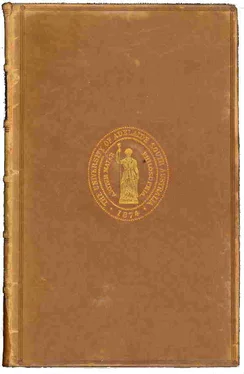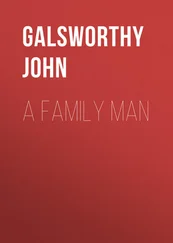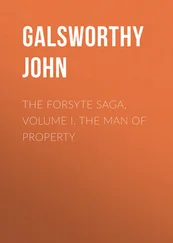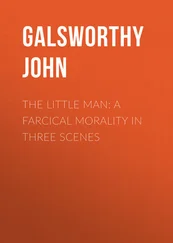Galsworthy, 1867-1933 - The Man of Property
Здесь есть возможность читать онлайн «Galsworthy, 1867-1933 - The Man of Property» весь текст электронной книги совершенно бесплатно (целиком полную версию без сокращений). В некоторых случаях можно слушать аудио, скачать через торрент в формате fb2 и присутствует краткое содержание. Жанр: Старинная литература, на английском языке. Описание произведения, (предисловие) а так же отзывы посетителей доступны на портале библиотеки ЛибКат.
- Название:The Man of Property
- Автор:
- Жанр:
- Год:неизвестен
- ISBN:нет данных
- Рейтинг книги:4 / 5. Голосов: 1
-
Избранное:Добавить в избранное
- Отзывы:
-
Ваша оценка:
- 80
- 1
- 2
- 3
- 4
- 5
The Man of Property: краткое содержание, описание и аннотация
Предлагаем к чтению аннотацию, описание, краткое содержание или предисловие (зависит от того, что написал сам автор книги «The Man of Property»). Если вы не нашли необходимую информацию о книге — напишите в комментариях, мы постараемся отыскать её.
The Man of Property — читать онлайн бесплатно полную книгу (весь текст) целиком
Ниже представлен текст книги, разбитый по страницам. Система сохранения места последней прочитанной страницы, позволяет с удобством читать онлайн бесплатно книгу «The Man of Property», без необходимости каждый раз заново искать на чём Вы остановились. Поставьте закладку, и сможете в любой момент перейти на страницу, на которой закончили чтение.
Интервал:
Закладка:
The Man of Property by John Galsworthy Volume 1 of The Forsyte Saga
eBooks@Adelaide
2010
This web edition published by eBooks@Adelaide .
Rendered into HTML by Steve Thomas .
Last updated Sat Aug 28 15:09:04 2010.
This work is licensed under a Creative Commons Licence
(available at http://creativecommons.org/licenses/by-nc-sa/2.5/au/). You are free: to copy, distribute, display, and perform the work, and to make derivative works under the following conditions: you must attribute the work in the manner specified by the licensor; you may not use this work for commercial purposes; if you alter, transform, or build upon this work, you may distribute the resulting work only under a license identical to this one. For any reuse or distribution, you must make clear to others the license terms of this work. Any of these conditions can be waived if you get permission from the licensor. Your fair use and other rights are in no way affected by the above.
eBooks@Adelaide
The University of Adelaide Library
University of Adelaide
South Australia 5005
Table of ContentsPreface Part I
‘At Home’ at Old Jolyon’s
Old Jolyon Goes to the Opera
In Swithin’s orange and light-blue dining-room, facing the Park, the round table was laid for twelve.
Projection of the House
A Forsyte Menage
James at Large
Old Jolyon’s Peccadillo
Plans of the House
Death of Aunt Ann Part II
Progress of the House
June’s Treat
Drive with Swithin
James goes to see for himself
Soames and Bosinney Correspond
Old Jolyon at the Zoo
Afternoon at Timothy’s
Dance at Roger’s
Evening at Richmond
Diagnosis of A Forsyte
Bosinney on Parole
June Pays Some Calls
Perfection of the House
Soames Sits on the Stairs Part III
Mrs. Macander’s Evidence
Night in the Park
Meeting at the Botanical
Voyage Into the Inferno
The Trial
Soames Breaks the News
June’s Victory
Bosinney’s Departure
Irene’s Return
TO MY WIFE:
I DEDICATE THE FORSYTE SAGA IN ITS ENTIRETY,
BELIEVING IT TO BE OF ALL MY WORKS THE LEAST
UNWORTHY OF ONE WITHOUT WHOSE ENCOURAGEMENT,
SYMPATHY AND CRITICISM I COULD NEVER HAVE
BECOME EVEN SUCH A WRITER AS I AM.
Last updated on Wed Jan 12 09:33:25 2011 for eBooks@Adelaide.
The Man of Property, by John Galsworthy
Preface
“The Forsyte Saga” was the title originally destined for that part of it which is called “The Man of Property”; and to adopt it for the collected chronicles of the Forsyte family has indulged the Forsytean tenacity that is in all of us. The word Saga might be objected to on the ground that it connotes the heroic and that there is little heroism in these pages. But it is used with a suitable irony; and, after all, this long tale, though it may deal with folk in frock coats, furbelows, and a gilt-edged period, is not devoid of the essential heat of conflict. Discounting for the gigantic stature and blood-thirstiness of old days, as they have come down to us in fairy-tale and legend, the folk of the old Sagas were Forsytes, assuredly, in their possessive instincts, and as little proof against the inroads of beauty and passion as Swithin, Soames, or even Young Jolyon. And if heroic figures, in days that never were, seem to startle out from their surroundings in fashion unbecoming to a Forsyte of the Victorian era, we may be sure that tribal instinct was even then the prime force, and that “family” and the sense of home and property counted as they do to this day, for all the recent efforts to “talk them out.”
So many people have written and claimed that their families were the originals of the Forsytes that one has been almost encouraged to believe in the typicality of an imagined species. Manners change and modes evolve, and “Timothy’s on the Bayswater Road” becomes a nest of the unbelievable in all except essentials; we shall not look upon its like again, nor perhaps on such a one as James or Old Jolyon. And yet the figures of Insurance Societies and the utterances of Judges reassure us daily that our earthly paradise is still a rich preserve, where the wild raiders, Beauty and Passion, come stealing in, filching security from beneath our noses. As surely as a dog will bark at a brass band, so will the essential Soames in human nature ever rise up uneasily against the dissolution which hovers round the folds of ownership.
“Let the dead Past bury its dead” would be a better saying if the Past ever died. The persistence of the Past is one of those tragi-comic blessings which each new age denies, coming cocksure on to the stage to mouth its claim to a perfect novelty.
But no Age is so new as that! Human Nature, under its changing pretensions and clothes, is and ever will be very much of a Forsyte, and might, after all, be a much worse animal.
Looking back on the Victorian era, whose ripeness, decline, and ‘fall-of’ is in some sort pictured in “The Forsyte Saga,” we see now that we have but jumped out of a frying-pan into a fire. It would be difficult to substantiate a claim that the case of England was better in 1913 than it was in 1886, when the Forsytes assembled at Old Jolyon’s to celebrate the engagement of June to Philip Bosinney. And in 1920, when again the clan gathered to bless the marriage of Fleur with Michael Mont, the state of England is as surely too molten and bankrupt as in the eighties it was too congealed and low-percented. If these chronicles had been a really scientific study of transition one would have dwelt probably on such factors as the invention of bicycle, motor-car, and flying-machine; the arrival of a cheap Press; the decline of country life and increase of the towns; the birth of the Cinema. Men are, in fact, quite unable to control their own inventions; they at best develop adaptability to the new conditions those inventions create.
But this long tale is no scientific study of a period; it is rather an intimate incarnation of the disturbance that Beauty effects in the lives of men.
The figure of Irene, never, as the reader may possibly have observed, present, except through the senses of other characters, is a concretion of disturbing Beauty impinging on a possessive world.
One has noticed that readers, as they wade on through the salt waters of the Saga, are inclined more and more to pity Soames, and to think that in doing so they are in revolt against the mood of his creator. Far from it! He, too, pities Soames, the tragedy of whose life is the very simple, uncontrollable tragedy of being unlovable, without quite a thick enough skin to be thoroughly unconscious of the fact. Not even Fleur loves Soames as he feels he ought to be loved. But in pitying Soames, readers incline, perhaps, to animus against Irene: After all, they think, he wasn’t a bad fellow, it wasn’t his fault; she ought to have forgiven him, and so on!
And, taking sides, they lose perception of the simple truth, which underlies the whole story, that where sex attraction is utterly and definitely lacking in one partner to a union, no amount of pity, or reason, or duty, or what not, can overcome a repulsion implicit in Nature. Whether it ought to, or no, is beside the point; because in fact it never does. And where Irene seems hard and cruel, as in the Bois de Boulogne, or the Goupenor Gallery, she is but wisely realistic — knowing that the least concession is the inch which precedes the impossible, the repulsive ell.
A criticism one might pass on the last phase of the Saga is the complaint that Irene and Jolyon those rebels against property — claim spiritual property in their son Jon. But it would be hypercriticism, as the tale is told. No father and mother could have let the boy marry Fleur without knowledge of the facts; and the facts determine Jon, not the persuasion of his parents. Moreover, Jolyon’s persuasion is not on his own account, but on Irene’s, and Irene’s persuasion becomes a reiterated: “Don’t think of me, think of yourself!” That Jon, knowing the facts, can realise his mother’s feelings, will hardly with justice be held proof that she is, after all, a Forsyte.
Читать дальшеИнтервал:
Закладка:
Похожие книги на «The Man of Property»
Представляем Вашему вниманию похожие книги на «The Man of Property» списком для выбора. Мы отобрали схожую по названию и смыслу литературу в надежде предоставить читателям больше вариантов отыскать новые, интересные, ещё непрочитанные произведения.
Обсуждение, отзывы о книге «The Man of Property» и просто собственные мнения читателей. Оставьте ваши комментарии, напишите, что Вы думаете о произведении, его смысле или главных героях. Укажите что конкретно понравилось, а что нет, и почему Вы так считаете.












